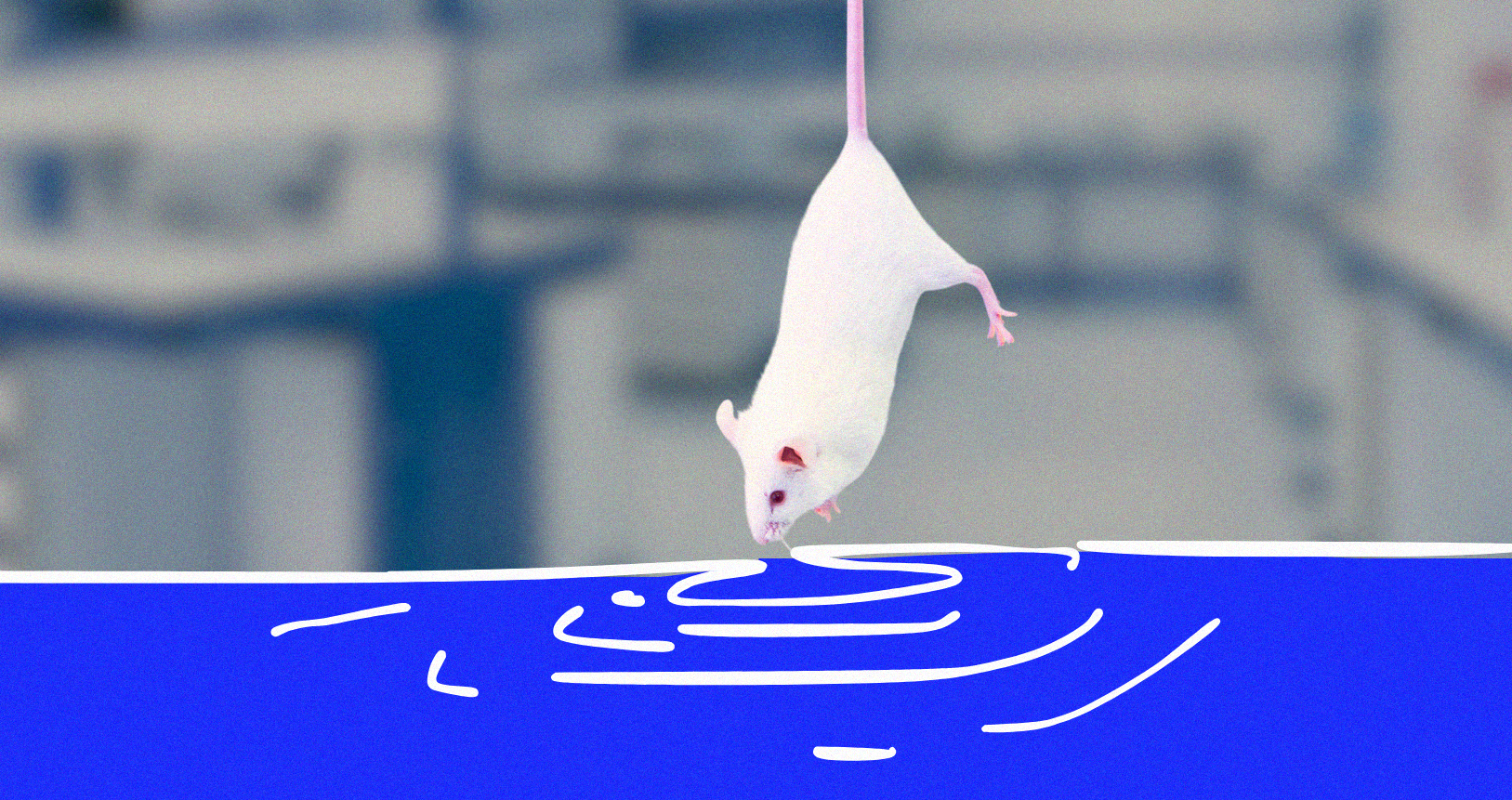
Treading Water: The Perverse Irony of the "Forced Swim Test"
In December, Australia’s lead medical research and funding body took public action to rein in one aspect of animal researchers’ stale agendas and voyeuristic tendencies by restricting their use of the “forced swim test”, an excruciatingly barbaric form of animal research that is “widely used” worldwide, including in the U.S.
Animal researchers pursue the forced swim test under the guise of studying human depression, anxiety, and other disorders.
To perform this test, an animal – typically a rat or a mouse, but also sometimes a vole or a baby rabbit – is first rendered “depressed” through genetic modification, “intrusive fiddling with [their] brain anatomy and physiology”, or – in a preview of the forced swim test itself – “shov[ing] [them] into the face of adversity” (by, for example, crowding their cages, separating them from their babies at birth, socially isolating them, depriving them of sleep, subjecting them to repeated electrical shocks from which they can’t get away, and/or exposing them to repeated, inescapable, and choreographed aggression and bullying from others).
Next, the victim is placed in a container of water from which he or she cannot escape (classically for 15 minutes and, then, 5-6 minutes the following day) while researchers watch the animal battle panic and exhaustion to survive.
The pervading “rationale” (i.e., excuse) for this test is that, once the victim animal stops attempting to escape in favor of immobility, they are displaying a type of “behavioral despair” akin to depression (and that, by extension, the infliction of this state upon other-than-human beings will somehow help depressed humans).
But many researchers have publicly – and since the test’s very inception in the 1970s – disagreed with this “rationale”, including its most fundamental thrust (that immobilization in this context equates to depression) and have posited, instead, that the immobility evidences “learned helplessness, passive coping, psychomotor retardation, anxiety, and even autism”. In fact, even the developer of the test himself(!), has conceded that there exists a “ . . . lack of neurobiological correlation between the behaviour of animals and the effects seen in humans….” – that, in other words, “‘there is little similarity between the clinical symptoms of depression in humans and the behaviours measured in the test’”.
So, just like the vast majority of animal research endeavors, researchers continue to favor and perform the forced swim test over and over and over and over again, despite both heavy scientific criticism and the absence of evidence of its “scientific validity”.
Lest there by any doubt:
- Evidence of the test’s “predictive accuracy” is anecdotal only and accompanied by “the qualifier that results don’t reliably generalize [even] from one strain of mouse or rat to another, or even from one supplier of a given strain to another” (much less from an other-than-human animal to a human).
- The test “has failed to accurately identify some of the most widely used antidepressants, including serotonin reuptake inhibitors (SSRIs), such as fluoxetin, and dopamine reuptake inhibitors (NDRIs) like bupropion.”
- A 2019 study demonstrated that “out of 47 compounds [tested via the forced swim test], not even one was considered safe and/or effective as a human antidepressant.”
- Pharmaceutical (and animal research) giants Pfizer, Johnson & Johnson, GlaskoSmithKline, and Bayer have not only stopped defending the use of this test but voluntarily asserted that they will no longer use the test for antidepressant development.
Yet, not only does the test’s use continue, but sectors of the animal research industry continue to regard it as the “‘gold standard animal test for depression’….”
Here we see a flash of the animal research industry’s weathered playbook, which touts as the “gold standard” for preclinical research any and all forms of animal research, regardless of how unvalidated, how unreliable, and how harmful.
By virtue of its longevity, the forced swim test has established deep financial roots within the animal research industry. To wit, not only do vendors of both animal subjects and equipment cater to the performance of this test, but, once again, the scientific journals that control research publications (and, thereby, scientists’ careers) reward the practice: a recent survey of journal editors found that even those who are aware of the forced swim test’s failures are disinclined to reject papers that rely on it….” even as they advise that the test “not be relied on too greatly”.
In tandem, scientists continue seeking funding for and subjecting animals to this test despite admitting that “[t]he claims about the necessity of continuing to use the [forced swim test] for the study of depression, given the availability of alternative tests, are theoretical at best, and lack empirical evidence”, and despite the development of “[a]nimal-free, human biology-based approaches [that] appear more promising when studying” human disorders.
The forced swim test – just like the industry of which it is a part – serves only the financial and egotistical interests of its facilitators. As such, and in a perverse irony, forcing animals to tread water in a laboratory is but one, stark example of how animal researchers are themselves “treading water”.
Rather than progressing toward their stated goal of improving human health, animal researchers – including those employing the forced swim test – are “just continuing doing the same things” in an effort to maintain their “status”.
It’s beyond time that we rise and force them out of the water. Please join us.
Tell your elected officials to help stop researchers from treading water (figuratively) and forcing other animals to tread water (literally). Support the HEARTS Act, which seeks to prioritize non-animal research methods supported by the largest worldwide funder, the National Institutes of Health (NIH).